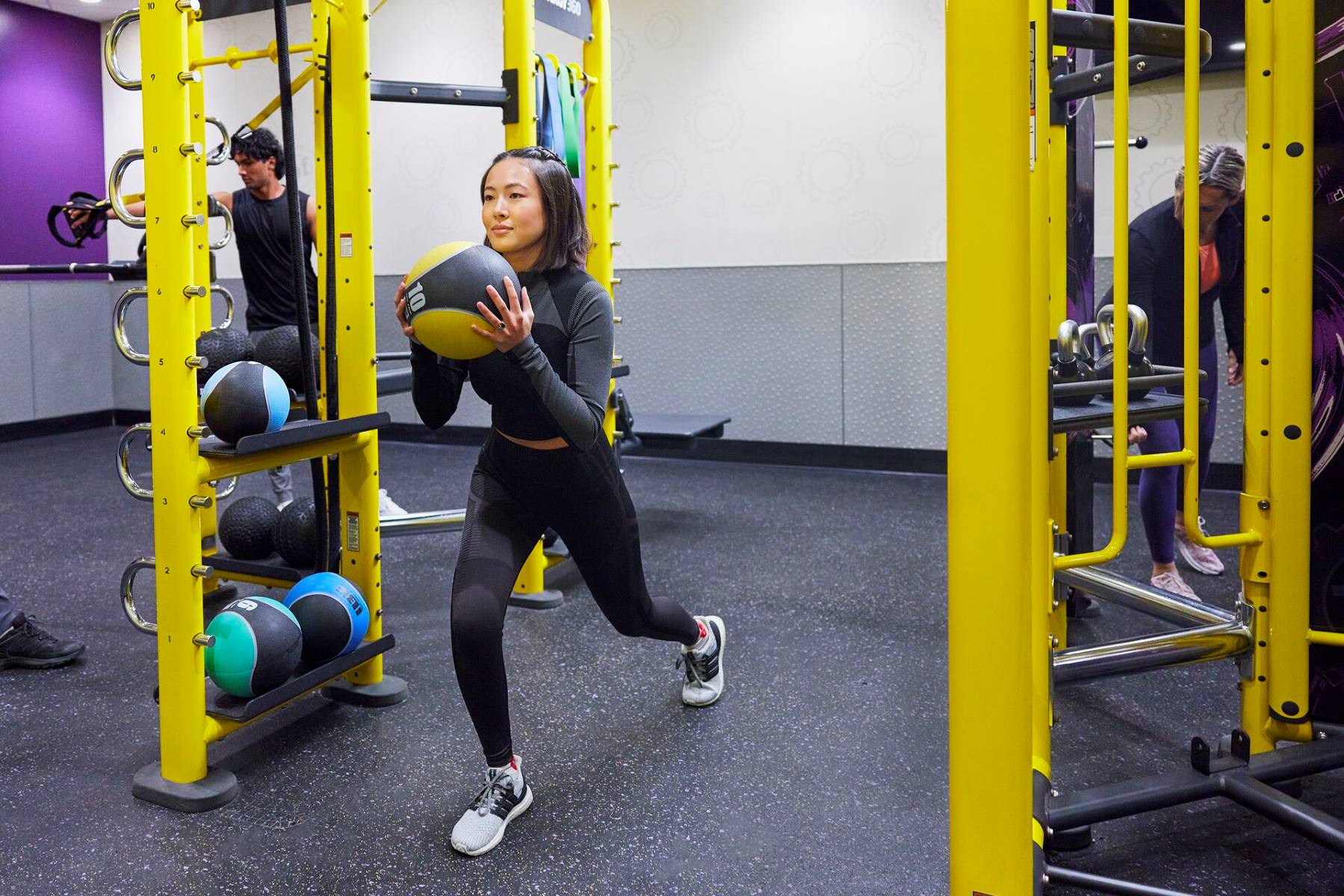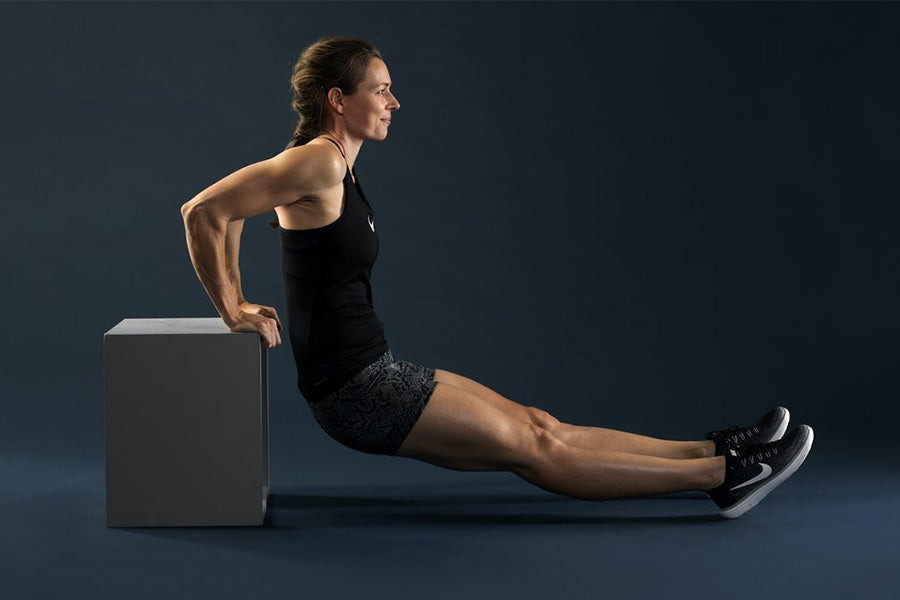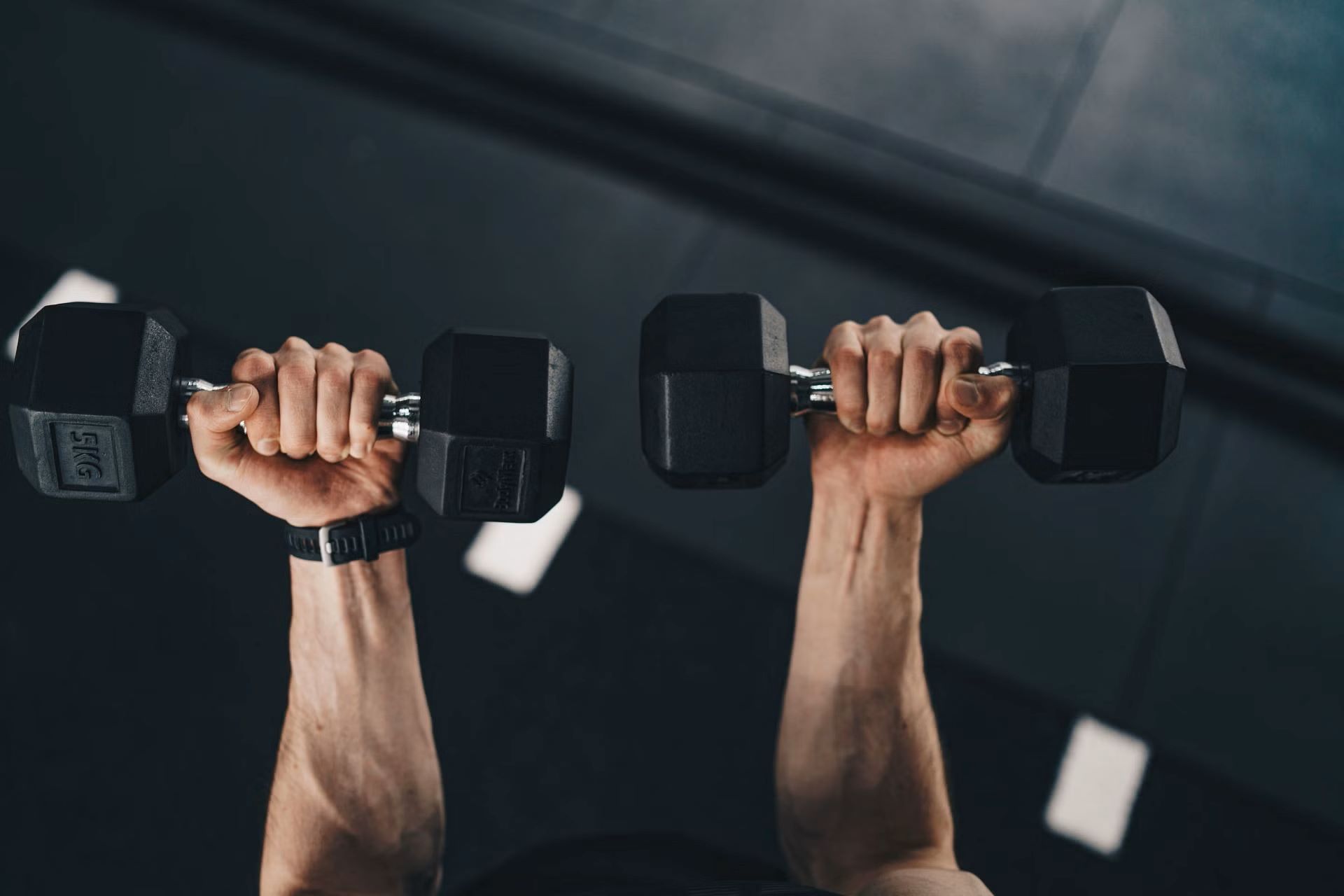

Featured
How To Workout Lats
Modified: August 19, 2023
Want to learn how to effectively workout your lats? Discover the top exercises and techniques featured in our comprehensive guide.
Introduction
Welcome to the world of fitness and strength training! If you’re looking to sculpt a V-shaped physique, with a broad and powerful upper body, it’s essential to prioritize your latissimus dorsi muscles, commonly referred to as the lats. The lats are the largest muscles in the back and play a crucial role in achieving a well-rounded and proportionate physique.
The lats are responsible for movements such as pulling, rowing, and adducting the arms. They not only contribute to a strong and stable back but also enhance overall strength and performance in various athletic endeavors. Whether you’re a seasoned gym-goer or a beginner, incorporating an effective workout routine targeting the lats can yield numerous benefits and help you reach your fitness goals.
In this article, we’ll guide you through the world of lats workouts, providing valuable insights and practical tips to maximize your training potential. Whether you’re new to fitness or an experienced lifter, there’s something here for everyone.
Before we dive into the specifics of lats workouts, it’s important to note that any effective training regimen should be accompanied by a well-rounded approach, incorporating proper nutrition, adequate rest, and a balanced lifestyle. Ensuring a holistic approach to your fitness journey will not only help you achieve your desired lats aesthetic but also promote overall well-being.
Now, let’s delve into the intricacies of the lats, enabling you to understand their anatomy, function, and the importance of targeting them in your workouts. With this knowledge, you’ll be better equipped to design a personalized lats training program that suits your needs and helps you unleash your full potential.
Understanding the Lats
Before we dive into the exercises and training techniques, it’s essential to grasp the anatomy and function of the lats. The latissimus dorsi muscles are located on each side of the upper back, spanning from the lower back to the upper arm. Their unique fan-like shape gives the back a powerful and wide appearance.
The primary function of the lats is to pull the upper arm down and toward the body, as in pull-ups or lat pulldowns. Secondly, they assist in movements such as rowing, which involve pulling objects towards the body. In addition to these functions, the lats also contribute to rotational movements, stability, and posture.
Strengthening and developing the lats can have a profound impact on your overall physical performance and aesthetics. A well-developed back not only enhances your physique but also plays a crucial role in various functional movements and sports.
One of the key benefits of training the lats is improved posture. The lats, along with the muscles of the upper back, help maintain an upright posture by counteracting the effects of rounded shoulders and excessive forward head posture. A strong and balanced back helps prevent postural issues and reduces the risk of injuries, especially in the shoulder and neck region.
Furthermore, well-developed lats contribute to upper body strength and power. As one of the largest muscle groups in the upper body, strong lats allow you to perform compound exercises with greater efficiency. Movements such as pull-ups, rows, and deadlifts heavily rely on the lats for stability and force production.
Lastly, having a well-defined and proportionate back can greatly enhance your aesthetics. A wide and muscular back creates the illusion of a smaller waist, giving you that coveted V-shaped physique. Whether you aspire to compete in bodybuilding or simply want to look good in a tank top, building strong and impressive lats should be a priority.
Now that we’ve gained a basic understanding of the lats and their significance, let’s move on to the next section, where we’ll discuss how to prepare for an effective lats workout.
Preparing for Lats Workout
Before diving into a lats-focused workout, it’s important to adequately prepare your body and mind for the session ahead. Proper preparation ensures optimal performance, reduces the risk of injuries, and enhances the overall effectiveness of your workout. Here are some key steps to follow in your pre-workout routine:
1. Warm-up: Begin your lats workout with a dynamic warm-up routine to increase blood flow, raise your core temperature, and activate the muscles. Incorporate exercises such as arm circles, shoulder rolls, and light cardio movements to prepare your shoulders, back, and arms for the upcoming workout.
2. Stretching: After your warm-up, perform static stretches targeting the muscles of the back, shoulders, and arms. Focus on stretching the lats specifically to improve muscle flexibility and range of motion. This will help prevent muscle imbalances and promote proper form during exercises.
3. Proper Form and Technique: Before starting your lats workout, familiarize yourself with the correct form and technique for each exercise. Improper technique can lead to injuries and limit the effectiveness of your workout. Consult with a fitness professional, watch instructional videos, or seek guidance from experienced lifters to ensure you’re performing exercises correctly.
4. Equipment Setup: If you’re planning to incorporate gym equipment like pull-up bars, cable machines, or resistance bands, ensure they’re properly set up and adjusted to your height and comfort. This will help you maintain proper form and maximize the benefits of each exercise.
5. Progression Plan: Create a structured progression plan for your lats workouts. Start with exercises suitable for your fitness level and gradually increase the intensity, duration, or weight as you progress. This ensures continual improvement and avoids plateauing in your training.
6. Focus and Mind-Muscle Connection: Mental preparation plays a crucial role in any workout. Before starting, mentally focus on the muscle group you’ll be targeting, in this case, the lats. Build a mind-muscle connection and visualize the lats contracting and working with each exercise. This can enhance muscle recruitment and improve the effectiveness of your workout.
7. Hydration and Nutrition: Stay hydrated throughout your workout by drinking water before, during, and after training. Additionally, fuel your body with a balanced pre-workout meal or snack containing carbohydrates and protein to support energy levels and muscle recovery.
By taking these steps to prepare yourself, you’re setting the foundation for a successful and rewarding lats workout. This preparation will not only optimize your performance but also help in preventing injuries and ensuring long-term progress in your fitness journey.
Lat Exercises for Beginners
If you’re new to lats training, it’s important to start with exercises that allow you to develop proper form and technique while gradually building strength. Here are some beginner-friendly lat exercises to incorporate into your routine:
- Lat Pulldowns: This exercise is a great starting point to target the lats. Sit at a lat pulldown machine, grasp the overhead bar with your hands wider than shoulder-width apart, and pull it down towards your chest while keeping your core engaged. Focus on squeezing your shoulder blades together as you pull down, then slowly release the weight back up.
- Bent-Over Rows: Stand with your feet shoulder-width apart, hinge at the hips while keeping your back straight, and hold a dumbbell in each hand. With a slight bend in your knees, pull the dumbbells up towards your chest, keeping your elbows close to your body. Engage your lats as you squeeze your shoulder blades together, then lower the weights back down in a controlled manner.
- Inverted Rows: Set up a barbell or TRX straps at waist height. Lie underneath the bar or straps, grasp them with an overhand grip wider than shoulder-width, and keep your body straight and aligned. Pull your chest towards the bar or straps by engaging your back muscles, then lower yourself back down with control.
- Assisted Pull-Ups: If pull-ups are still too challenging, you can use an assisted pull-up machine or resistance bands. Set up the machine or secure the bands to provide assistance as you perform the pull-up motion. Gradually decrease the assistance over time to build strength and progress towards unassisted pull-ups.
Remember, as a beginner, it’s important to focus on mastering proper form and technique. Start with lighter weights and gradually increase the resistance as you become more comfortable and stronger. Aim to perform 2-3 sets of 10-12 repetitions for each exercise, resting for 60-90 seconds between sets.
Incorporating these exercises into your lats workout routine will develop a solid foundation and help you build the necessary strength and muscle activation to progress to more advanced exercises in the future.
Intermediate Lat Workout Routine
Once you’ve built a foundation of strength and are comfortable with basic lat exercises, it’s time to level up your training routine. Here’s an intermediate lat workout routine that will challenge your lats and help you take your back development to the next level:
1. Pull-Ups: Start your routine with pull-ups, an excellent compound exercise that targets the lats, along with other muscles in the back and arms. Aim for 3 sets of 8-10 reps. If you can’t perform a full pull-up yet, you can use an assisted pull-up machine or resistance bands for assistance.
2. Bent-Over Rows: Follow up with bent-over rows to further engage the lats and build upper back strength. Perform 3 sets of 10-12 reps using dumbbells or a barbell. Focus on maintaining a strong, stable core and proper form throughout the movement.
3. Lat Pulldowns: After bent-over rows, move on to lat pulldowns to specifically target the lats. Aim for 3 sets of 12-15 reps, focusing on a controlled eccentric (lowering) phase and a strong contraction of the lats during the concentric (pulling) phase.
4. Seated Cable Rows: Incorporate seated cable rows to further challenge the lats and provide a different stimulus. Sit at a cable machine with a V-bar attachment, grasp the handles with an overhand grip, and pull them towards your chest while maintaining good posture. Perform 3 sets of 10-12 reps.
5. Single-Arm Dumbbell Rows: Finish off your intermediate lat workout routine with single-arm dumbbell rows. Place one knee and the same-side hand on a flat bench, hold a dumbbell in the opposite hand, and row the weight towards your hip. Perform 3 sets of 10-12 reps per side to ensure balanced development.
Throughout this routine, focus on maintaining proper form, engaging the lats, and feeling the muscles working during each exercise. Allow for adequate rest between sets, typically around 60-90 seconds, to recover before performing the next set.
As you progress in your training, gradually increase the weight or intensity, adjust the repetitions or sets, and experiment with different variations of exercises to continue challenging your lats and stimulating muscle growth.
Remember to listen to your body and adjust the routine as needed, while also considering incorporating other compound exercises and strengthening exercises for other back muscles to ensure balanced development.
Advanced Lat Training Techniques
If you’ve mastered the intermediate lat workout routine and are seeking further challenge and stimulation for your lats, incorporating advanced training techniques can help take your back development to even greater heights. Here are some effective techniques to consider:
1. Weighted Pull-Ups: Once you can perform a significant number of bodyweight pull-ups with proper form, adding additional weight is a great way to increase the intensity and challenge your lats even further. Use a weight belt or hold a dumbbell between your feet to add resistance. Aim for 3-4 sets of 6-8 reps.
2. Eccentric Training: Eccentric training focuses on the lowering phase of an exercise and can be highly effective for muscle hypertrophy. For example, during pull-ups or lat pulldowns, emphasize a slow and controlled eccentric (lowering) phase, taking around 3-4 seconds to lower yourself or the weight. Perform 3-4 sets of 8-10 reps.
3. Isometric Holds: Isometric holds involve holding a position in the middle or end range of a movement to maximize muscle engagement. During pull-ups or lat pulldowns, pause for a few seconds at the top of the movement, fully contracting your lats, before lowering yourself or the weight. Incorporate 2-3 sets of 10-12 reps with holds of 3-5 seconds.
4. Wide-Grip Cable Rows: Utilize a wide grip on the cable row machine to emphasize the activation of the lats. Place your hands wider than shoulder-width apart and focus on pulling your elbows back and squeezing your shoulder blades together. Perform 3-4 sets of 10-12 reps, focusing on quality reps rather than heavy weights.
5. Superset and Drop Sets: To increase the intensity and endurance of your lat workout, incorporate supersets and drop sets. For example, pair pull-ups with bent-over rows or lat pulldowns with seated cable rows and perform them back-to-back without resting. You can also incorporate drop sets by decreasing the weight after reaching muscle failure and continuing with lighter weights to fatigue the muscles further.
6. Variation Exercises: Include variation exercises to challenge your lats from different angles and stimulate muscle growth. Examples include wide-grip pull-ups, chin-ups, wide-grip lat pulldowns behind the neck, and one-arm cable rows. Incorporate these exercises into your routine to ensure comprehensive development of the lats.
When incorporating advanced training techniques, it’s vital to prioritize safety and proper form. Maintain control over the movements, focus on the mind-muscle connection, and avoid sacrificing technique for the sake of intensity. Gradually increase the weight or intensity as you become comfortable and always listen to your body to prevent overtraining or injuries.
By incorporating these advanced techniques into your lat training, you’ll challenge your muscles in new ways, promote muscle growth, and continue to make progress towards a stronger and more defined back.
Incorporating Lats Workout into Your Fitness Regimen
To maximize the benefits of your lats workout and ensure well-rounded fitness, it’s important to incorporate it into your overall fitness regimen. Here are some tips on how to effectively integrate lats training into your routine:
1. Frequency: Aim to train your lats at least twice a week to provide sufficient stimulus for muscle growth and development. This frequency allows for optimal recovery between sessions while ensuring consistent progress.
2. Balance: While lats training is important, it’s essential to maintain a balanced approach to your overall fitness routine. Include exercises targeting other major muscle groups such as legs, chest, shoulders, and core. This balanced approach promotes overall strength, prevents muscle imbalances, and enhances athletic performance.
3. Schedule: Determine the best days and times to incorporate your lats workout based on your schedule and personal preferences. Some people prefer to train lats alongside other back muscles, while others prefer to spread their workouts throughout the week. Find a schedule that works for you and allows for adequate recovery.
4. Sequence: Consider the order in which you perform your exercises. If you have a preference for compound movements like deadlifts or rows, perform them earlier in your workout when your energy levels are higher. This allows you to exert maximum effort and maintain proper form during these exercises.
5. Implement Supersets or Circuits: To save time and increase the intensity of your workouts, incorporate supersets or circuits that target both your lats and other muscle groups. For example, pair lat pulldowns with push-ups or combine bent-over rows with lunges. This approach keeps your heart rate elevated and maximizes efficiency.
6. Progressive Overload: Gradually increase the intensity, volume, and resistance of your lats workouts over time. This concept of progressive overload stimulates muscle growth and prevents plateaus. Increase the weight, decrease the rest time, or add extra sets as you become stronger and more advanced.
7. Listen to Your Body: Pay attention to your body’s cues and adjust your lats workout accordingly. If you experience persistent pain or discomfort, consult a healthcare professional or certified trainer to address any underlying issues. Prioritize your safety and well-being throughout your fitness journey.
8. Recovery and Rest: Allow for adequate rest and recovery between lats workouts. Your muscles need time to repair and grow stronger. Aim for 48-72 hours of rest between sessions to optimize recovery and avoid overtraining.
9. Flexibility and Mobility: Incorporate flexibility and mobility exercises into your routine to improve your range of motion and maintain joint health. Stretching the lats, shoulders, and upper back can enhance the effectiveness of your lats workout and reduce the risk of injuries.
By incorporating these strategies into your fitness regimen, you’ll be able to effectively integrate lats training into your overall routine and set yourself up for long-term success.
Common Mistakes to Avoid During Lats Workout
When it comes to lats workouts, it’s important to perform exercises with proper form and technique to maximize the benefits and reduce the risk of injuries. Here are some common mistakes to avoid during your lats workout:
1. Using Momentum: Avoid using momentum to swing or jerk your body during exercises like pull-ups or lat pulldowns. This takes the focus away from the lats and reduces their involvement. Instead, focus on controlled and intentional movements, emphasizing the contraction of the lats throughout the exercise.
2. Neglecting Full Range of Motion: Ensure that you perform each exercise with a full range of motion to fully engage the lats and maximize muscle activation. This means extending your arms fully during the eccentric phase (stretching) and squeezing your shoulder blades together during the concentric phase (contraction).
3. Relying Solely on Machines: While machines can be effective for targeting the lats, it’s important to incorporate free weight exercises as well. Free weights, such as dumbbells and barbells, engage stabilizing muscles and provide a more functional approach to lats training. This helps develop overall strength and stability.
4. Neglecting Other Back Muscles: Don’t focus solely on the lats and neglect the other muscles of the back. A well-rounded back development includes the rhomboids, traps, and erector spinae. Incorporate exercises that target these muscles to ensure balanced development and prevent muscle imbalances.
5. Failure to Warm Up Properly: Skipping or rushing through a proper warm-up can increase the risk of injuries and decrease your overall performance. Take the time to warm up your body, especially the muscles of the back and shoulders, with dynamic movements and stretches before starting your lats workout.
6. Poor Posture: Maintaining a good posture during lats exercises is crucial for proper muscle engagement and injury prevention. Avoid excessive arching of the lower back or rounding of the shoulders. Keep your spine neutral, your chest lifted, and your core engaged throughout each exercise.
7. Neglecting Mind-Muscle Connection: Developing a strong mind-muscle connection is essential for effectively targeting the lats. Instead of going through the motions, focus on consciously contracting and engaging the lats during each exercise. Visualize the muscles working and concentrate on feeling the lats activate with each repetition.
8. Ignoring Proper Breathing Techniques: Pay attention to your breathing during lats exercises. Exhale during the contraction phase and inhale during the eccentric phase. This helps stabilize your core and enhances the effectiveness of the exercise.
9. Overtraining: While it’s important to train the lats regularly, overtraining can hinder progress and increase the risk of injuries. Allow for proper rest and recovery by incorporating rest days into your routine and giving your muscles time to repair and grow stronger.
By avoiding these common mistakes and focusing on proper form, technique, and overall body awareness, you can optimize your lats workout and achieve the results you desire in a safe and effective manner.
Conclusion
Incorporating a targeted lats workout into your fitness regimen is essential for developing a strong, well-defined back and achieving a balanced physique. By understanding the anatomy and function of the lats, you can effectively target this muscle group and maximize your training potential.
Starting with beginner-friendly exercises and gradually progressing to more advanced techniques, you can challenge your lats and stimulate muscle growth. Maintaining proper form, avoiding common mistakes, and focusing on the mind-muscle connection are crucial for achieving optimal results and reducing the risk of injuries.
Integrating your lats workout into your overall fitness routine requires balance, proper scheduling, and consideration of other muscle groups. Strive for consistency, progressive overload, and adequate rest and recovery to ensure continued progress and avoid plateaus.
Remember, fitness is a journey, and it’s important to listen to your body, seek guidance when needed, and make adjustments along the way. While developing strong and impressive lats is a worthy goal, it’s equally important to prioritize overall health, well-being, and a balanced lifestyle.
So, whether you’re a beginner embarking on your fitness journey or an experienced lifter striving for greater back development, incorporating an effective lats workout into your routine will help you unlock your full potential and achieve the physique you desire.
Now, it’s time to put your knowledge into action and start sculpting those lats to create a powerful and impressive back. Stay consistent, stay motivated, and enjoy the journey towards a stronger and more confident you.









